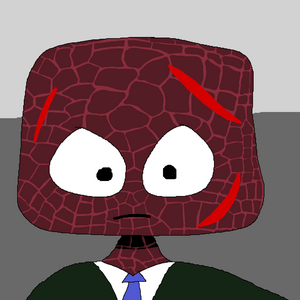Tun'ilhameng

The Tun'ilhameng (Lit. "Beasts Cursed by Hangmeng") are a social catagory in Medieval and Modern Nongban society. The Tun’ilhameng are slaves that are legally considered animals and chattel. Tun’ilhameng are commonly used for mining, farming, transportation, and food. Tun’ilhameng are often mutilated disfigured and inbred to make them seem less like humans. Due to centuries of propaganda very few Nongbans consider the Tun’ilhameng humans and there are conspiracies within Nongban acedemic circles to suggest that Tun’ilhameng were never related to humans.
History
Around the year 9530, the Congress of the Yotumic Confederacy passed a landmark law. They declared that all non-hangists were not humans, and therefore Hangmeng’s truths of Life, death, and hatred did not apply to them. Around the year 9600 this law was put into practice.
A large lizard farm in the Yotum mountains captured a tribe of nan-hangist, cannibals, in the desert. These “animals” were held in an enclosed area to mine copper. As these slaves proved effective, they would capture more slaves to mine copper. Eventually these mines gathered more copper than any other mine
During the 14,120 famine, many slaves died of starvation, and their remains were fed to citizens. When the news of this happening reached the general public it reached mixed opinion. While many thought it was unethical, many thought of these slaves as non humans and that nothing was wrong with eating their remains as it prevented some hangists from dying. Eventually, after the famine, demand for meat began to rise. As the general opinion was still so mixed the owners of the slave mines would burn the skin of all the slaves, cut off their tongues, and paint their faces to make them seem less like humans. To make the public less concerned about them (and more importantly, prevent the congress from outlawing this farming) they would let the public watch the mutilated slaves from special areas to make them seem far more like livestock. This was so effective that over decades the meat of these slaves became more prized than lizard meat.
In the year 14582 the Congress of the YCH praised Tun’ilhameng products. The congress subsidized more to be opened and for a propaganda campaign to promote those products. Due to the high profit margin of these farms protections against escape were great, and very few slaves would ever escape where they were housed.
Meat from slaves used to mine rock, copper, and iron were considered less valuable, while meat from slaves that woved fabrics were considered the best. Over time, slaves of these two conditions were selectivley bred not only to improve meat and their working skills but also to make them appear less human.
Transportation to Ronatana
The YDF began the process of colonising the island of Ronatana on 11-7 2 PC. Between 4 PC and 6 PC all Tun'ilhameng were transported to Ronatana to work in the growing of polbi.
Tun'ilhameng Crisis
On 19-10 7 PC an organisation made up of both Tun'ilhameng and sympathetic Nongbans called the Tun'ilhameng Liberation Procedure (TLP) started fires across Ronatana. The fire quickly spread to engulf around 70% of the island causing the YDF to order the majority of Nongbans off the island, leaving the Tun'ilhameng in control of most of the island. One of the few remaining YDF controled structures on Ronatana was a gunpowder factory which the TLP attacked and disabled on 3-11 7 PC. On 16-11 7 PC 19 bombs were simultaneously detonated on Nongba killing 80 people including 10 members of the YDF congress.
As transportation
In the year 8602, the first sled rails were opened. These railways were built alongside major roads. The “rails” were made of concrete, while the cars were made of steel and wood. The cars ran individually. They were enclosed to house 10 slaves that would move the car up to speeds of 10 miles per hour. The slaves were hidden away from the outside, both to prevent overheating and escape but also to prevent people from seeing the slaves, as at this time most people considered slaves very unsightly and filthy. In addition, the YCH Congress tried to cover up the mistreatment of slaves to prevent people drawing connections between slaves and the beginning of Hangism, as Hangmeng was raised a slave. These cars could carry up to 1 ton of material. These rails replaced the pushed carts on the major roadways.
Population
| Date | Population | Population group | Source |
|---|---|---|---|
| 21-1 9 PC | 30,000 | Ronatana | YDF Census Bureau |